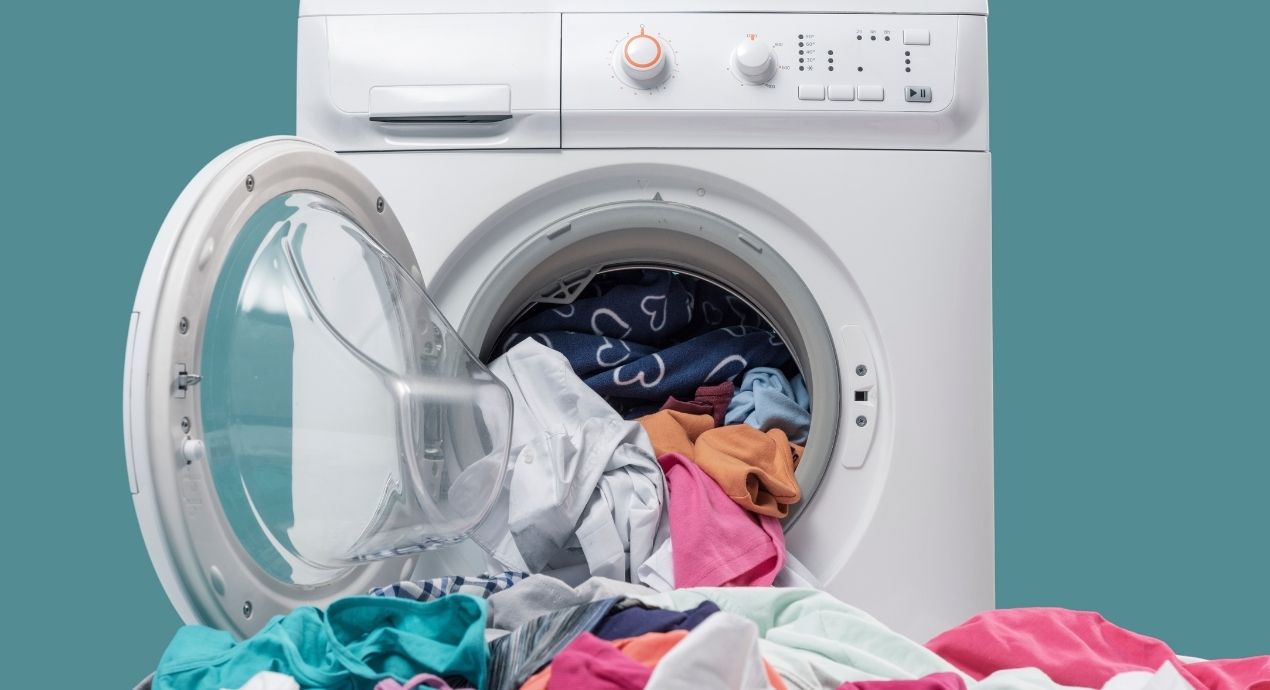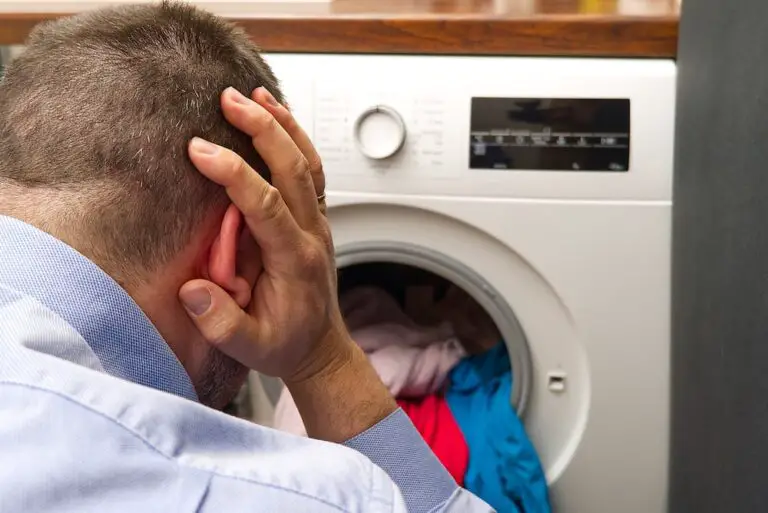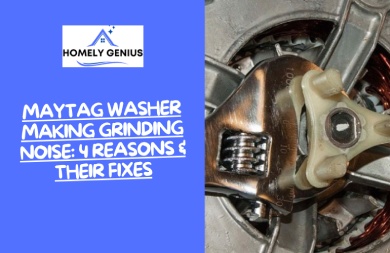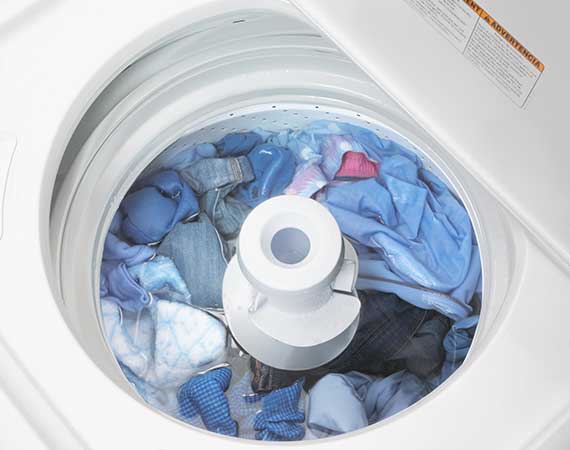Clothes Washer Repair: Expert Tips to Save Time and Money

Clothes washer repair ensures your appliance runs efficiently and lasts longer. Fixing common issues can save time and money.
A well-maintained clothes washer is essential for every household. Identifying and addressing problems early can prevent major breakdowns. Common issues include water leakage, unusual noises, and improper spinning. Regular maintenance, such as cleaning filters and checking hoses, can enhance performance.
DIY fixes might solve minor issues, but professional help is advisable for complex problems. Timely repairs not only extend the lifespan of your washer but also improve its efficiency. Investing in quality repair services can reduce energy bills and prevent costly replacements. Keep your washer in top condition to enjoy hassle-free laundry days.
Credit: www.thespruce.com
Common Washer Problems
Washing machines are essential in every home. But they can face issues. Below, we explore common washer problems and how to fix them.
Leaking Issues
Leaking is a common issue in washers. It can cause water damage. Check these parts:
- Hoses: Inspect for cracks or loose connections.
- Door Seal: Ensure it is clean and undamaged.
- Drain Pump: Look for blockages or defects.
Replace faulty parts to stop leaks. Use a drip pan to catch water.
Noisy Operation
A noisy washer can be disruptive. Common causes include:
- Loose Drum: Tighten or replace drum bearings.
- Uneven Load: Distribute clothes evenly in the drum.
- Foreign Objects: Remove items stuck in the drum or filter.
If noise persists, call a professional. Noise can signal larger problems.
Failure To Start
Sometimes, washers won’t start. Check these first:
- Power Supply: Ensure the washer is plugged in.
- Door Latch: Make sure the door is closed properly.
- Control Panel: Look for error codes or reset options.
Replace damaged parts to restore function. Consult your washer’s manual for more tips.
Essential Tools
Fixing your clothes washer can save you money and time. Having the right tools ensures you do the job efficiently. This section covers the essential tools you need for clothes washer repair.
Tool Kit Essentials
A good tool kit is vital for any repair. Here are the essential tools:
| Tool | Purpose |
|---|---|
| Screwdrivers | Remove and tighten screws. |
| Wrench | Loosen and tighten nuts and bolts. |
| Pliers | Grip and turn small objects. |
| Multimeter | Check electrical connections. |
| Utility Knife | Cut wires and other materials. |
Safety Gear
Wearing the right safety gear is crucial. Protect yourself with the following:
- Gloves: Protect your hands from cuts and burns.
- Safety Goggles: Shield your eyes from debris.
- Ear Protection: Reduce noise levels when using power tools.
- Face Mask: Avoid inhaling dust and chemicals.
These tools and safety gear will make your washer repair easier and safer. Always have them ready for any repair job.
Diagnosing Issues
Understanding how to diagnose issues with your clothes washer is crucial. This skill can save you time and money. Diagnosing issues involves a few key steps. These steps will help identify the problem accurately.
Error Codes
Modern washers often display error codes. These codes indicate specific problems. Check your washer’s manual for code meanings. If you see an error code, note it down. You can search online for solutions to these codes. Common error codes include F1, E1, and LE. Each code points to a different issue. Understanding these codes is the first step to a solution.
Visual Inspection
A thorough visual inspection can reveal many issues. Look for any visible damage. Check the hoses for leaks or cracks. Inspect the drum for any foreign objects. Make sure the door seal is intact. A damaged seal can cause leaks. Check the detergent drawer for buildup. Clean any visible dirt or residue.
Listening For Clues
Listening can also help diagnose problems. Unusual noises often indicate issues. Listen for loud banging or grinding sounds. These can suggest a problem with the drum. A high-pitched squeal might mean a belt issue. Clicking sounds can indicate a foreign object. Note any unusual sounds and their patterns.
Quick Fixes
Sometimes, your clothes washer may act up and need a quick fix. You don’t always need a technician. Try these simple solutions to get your washer running smoothly again.
Resetting The Machine
Resetting your washer can solve many common issues. Unplug the washer from the power outlet. Wait for about five minutes. Plug it back in and turn it on. This simple step can clear minor errors and glitches.
Cleaning The Filter
A clogged filter can cause your washer to malfunction. Locate the filter, usually at the bottom front of the machine. Open the filter cover and pull out the filter. Rinse it under running water to remove lint and debris. Reinsert the filter and close the cover.
Balancing The Load
An unbalanced load can make your washer noisy and less effective. Make sure your clothes are evenly distributed in the drum. Avoid overloading the washer. Use a mix of small and large items for a balanced load. If your washer has an uneven load, it may stop working properly.
Replacing Parts
Replacing parts in your clothes washer can extend its life. It can also save you money. Learn how to replace parts safely and correctly. Follow this guide to keep your washer running smoothly.
Finding Replacement Parts
The first step is finding the right parts. Check your washer’s model number. You can find this on a sticker inside the door or on the back. Use this number to search for parts online. Many websites sell washer parts. Some popular sites include Amazon, eBay, and appliance stores.
Compare prices and reviews. Make sure the parts are compatible with your model. Order the parts you need. Keep the receipts for returns if needed.
Step-by-step Guide
Follow this step-by-step guide to replace parts in your washer:
- Unplug the Washer: Safety first. Always unplug the washer before starting.
- Remove the Old Part: Use a screwdriver to remove screws. Take out the broken part carefully.
- Install the New Part: Place the new part in the same spot. Secure it with screws.
- Reconnect the Washer: Plug the washer back in. Make sure all connections are tight.
Testing After Replacement
After replacing parts, test the washer. Run a short cycle. Check for leaks or strange noises. Make sure the washer spins and drains correctly.
If you find any issues, double-check your work. Ensure all parts are installed correctly. If needed, consult the manual or seek professional help.
Regular maintenance keeps your washer in good shape. Replace worn-out parts to avoid bigger problems.
Maintenance Tips
Proper maintenance of your clothes washer ensures it runs efficiently. Following these tips can extend its lifespan and save you money on repairs.
Regular Cleaning
Keep your washer clean to avoid mold and foul odors. Use a washer cleaner or a mixture of vinegar and baking soda.
- Run an empty wash cycle with hot water and cleaner.
- Wipe the drum, door, and gasket with a damp cloth.
- Remove and clean the detergent dispenser.
Cleaning your washer regularly keeps it in good condition.
Checking Hoses
Inspect hoses for leaks, cracks, or bulges. Replace any damaged hoses immediately.
- Check hoses every six months.
- Ensure hoses are tightly connected.
- Use stainless steel hoses for better durability.
Regular hose checks prevent water damage and costly repairs.
Preventative Measures
Take steps to prevent future issues with your washer. Simple actions can make a big difference.
- Do not overload the washer.
- Use the correct amount of detergent.
- Balance the load properly.
- Leave the door open after use to dry the interior.
- Perform a monthly maintenance wash with hot water and cleaner.
These measures help your washer run smoothly and last longer.
When To Call A Professional
Is your clothes washer acting up? Sometimes, a quick fix can solve the problem. But, not every issue is simple. Knowing when to call a professional can save you time and money. Let’s dive into the details.
Identifying Complex Problems
Not all washer problems are easy to fix. Here are some signs your issue might be complex:
- Strange noises during the wash cycle
- Water leaks from the machine
- Washer not spinning or draining
- Electrical issues or power failures
These problems often need a professional’s touch. Attempting a DIY fix may worsen the issue.
Cost-benefit Analysis
Weighing the cost of repair against the benefits can guide your decision. Here’s a simple table to help:
| Factor | DIY Repair | Professional Repair |
|---|---|---|
| Cost | Lower, but risky | Higher, but safer |
| Time | May take longer | Quicker resolution |
| Success Rate | Varies | High |
A professional repair ensures safety and efficiency. It might be more expensive, but the long-term benefits are worth it.
Credit: www.thespruce.com
Energy Efficiency Tips
Energy efficiency is crucial for saving money and the planet. Making small changes to your clothes washer routine can have a big impact. Here are some energy efficiency tips to help you save energy and money.
Optimizing Load Size
Always run full loads to maximize energy use. Avoid running the washer with just a few items. This wastes energy and water. If you must wash a small load, adjust the water level settings.
| Load Type | Recommended Water Level |
|---|---|
| Small | Low |
| Medium | Medium |
| Large | High |
Using Cold Water
Washing clothes in cold water saves energy. Heating water consumes a lot of electricity. Most detergents work well in cold water. Cold water is also gentle on fabrics, making clothes last longer.
- Use cold water for everyday clothes.
- Switch to cold water detergents for better results.
- Save hot water for heavily soiled items only.
Energy-saving Settings
Many washers have energy-saving settings. Use the “Eco” or “Energy Saver” mode whenever possible. These settings use less water and lower washing temperatures. Modern washers adjust the wash cycle based on load size and fabric type.
- Select the energy-saving mode.
- Use shorter wash cycles for lightly soiled clothes.
- Check for energy-efficient labels when buying a new washer.
Following these tips can make your washer more energy-efficient. You will save money and help the environment.

Credit: www.bestpickreports.com
Frequently Asked Questions
Is It Worth Repairing A Washing Machine?
Repairing a washing machine is often worth it if the cost is less than half the price of a new one. Consider the machine’s age and repair history.
Is It Cost Effective To Fix A Washing Machine?
Fixing a washing machine can be cost-effective. Repair costs are usually lower than buying a new machine. Evaluate repair costs and machine age. Generally, repairs make sense for newer models with minor issues.
Can You Repair A Washing Machine Yourself?
Yes, you can repair a washing machine yourself. Follow the manual, use proper tools, and ensure safety.
What Is The Life Of A Clothes Washer?
A clothes washer typically lasts 10-13 years. Regular maintenance can extend its life. Choose a reliable brand for durability.
How Do I Fix A Leaking Washer?
Check hoses and connections for leaks. Tighten or replace if necessary.
Why Is My Washer Not Spinning?
A broken belt or faulty lid switch may be the cause. Inspect and replace as needed.
How Do I Unclog A Washer Drain?
Remove and clean the drain pump filter. Check for blockages in hoses.
What Causes A Washer To Make Loud Noises?
Unbalanced loads, worn bearings, or foreign objects can cause noise. Check and address these issues.
Conclusion
Repairing your clothes washer can save time and money. Regular maintenance ensures longer machine life and better performance. Always consult a professional for complex issues. By addressing minor problems early, you avoid costly repairs. Keep your washer in top shape for a hassle-free laundry experience.






![Amana Washer Not Draining [Quick Guide]](https://homelygenius.com/wp-content/uploads/2023/08/Amana-Washer-Not-Draining-1-1.jpg)